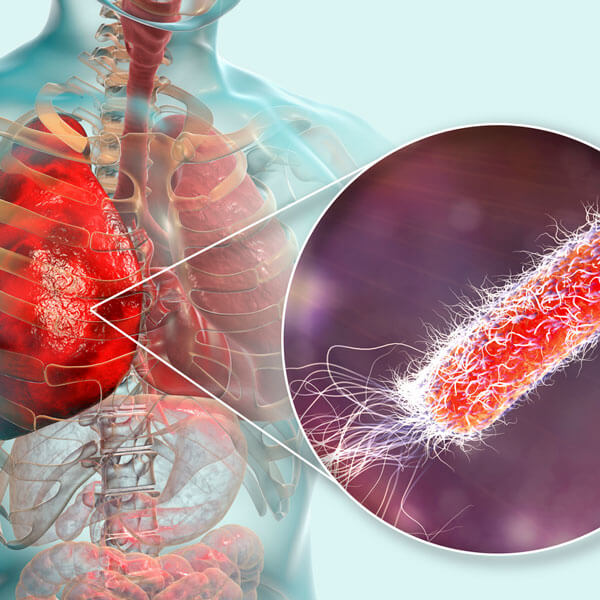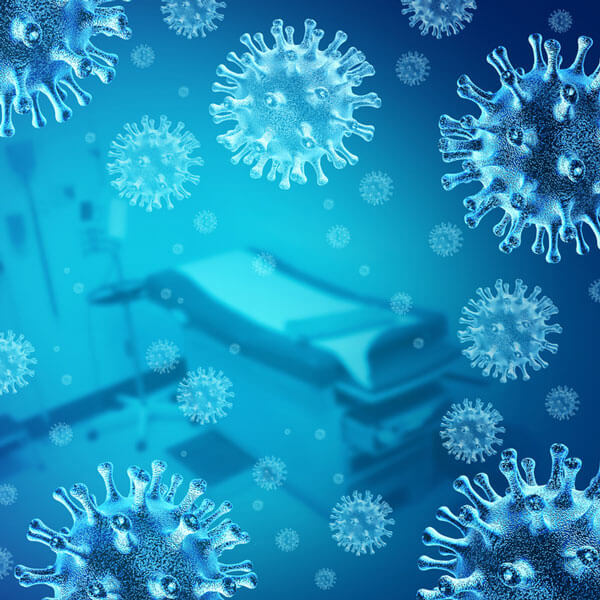Hospital Hygiene & Cooling Tower Testing
What Are Cooling Towers Used For?
Heating, ventilation, and air conditioning (HVAC) and industrial uses are the main uses for cooling towers. Cooling towers enable systems that require cooling to operate in an economical and energy-efficient manner. Over 1,500 industrial enterprises utilize a lot of water to keep their plants cool. Schools, hospitals, and major office buildings are the usual places where HVAC systems are used. Greater in size than HVAC systems, industrial cooling towers are employed in power plants, petrochemicals, natural gas processing, food processing, and other industrial facilities to extract heat from the circulating cooling water systems.

Cooling Towers and Legionnaires’ Disease
Cooling towers can harbor Legionella bacteria due to their huge water content and lack of regular maintenance and disinfection. Heat exchange warms the water in cooling towers, creating a perfect growing environment for the heat-loving bacteria Legionella. Inhaling water droplets contaminated with the Legionella bacterium can result in the contracting of Legionnaires’ illness. The illness was given its name in 1976 after members of the American Legion who were in Philadelphia for a convention experienced an uncommon case of pneumonia (lung infection). Legionnaires’ disease outbreaks from tainted cooling towers continue to happen today.
Hospital Environment
- Standard ISO Culture Test With 10-14 Day Turnaround
- Rapid Legiolert 7 Day Culture Test
- Quantitative Polymerase Chain Reaction (qPCR) Test: Identifies Legionella spp., L. pneumophila and L. pneumophila serotype 1, and Quantifies L. pneumophila in One qPCR Test
- Whole Genome Sequencing (WGS): Allows Identification of Legionella Strains for Infection Source Tracking and Outbreak Investigations
- Spore Traps: Air-O-Cell, Allergenco, Micro5, MoldSnap, BioAire, Burkard, and Biosis
- Direct Examination: Tape, Bulk, Swab, and Water Samples
- Culturable Air Samples: Andersen, SAS, and More
- PCR and DNA Testing: ERMI, Healthcare-Acquired Infections (HAIs), and More
- Sewage Screen Cultures: Total Coliform, Fecal Coliform, E. coli, and Enterococci
- Pseudomonas aeruginosa Detection and Enumeration
- PCR Testing: Bacteroides spp. (Total, Human)
- Heterotrophic Plate Count (HPC)
- Microbial Induced Corrosion (MIC): Associated Bacteria - SRB, APB, HAB, SLYME, IRB

Healthcare-Acquired Infections
Healthcare-associated infections, also known as healthcare-acquired infections (HAIs), are infections contracted from medical professionals such as doctors or nurses, or while undergoing treatment at a hospital or other healthcare facility. Healthcare-acquired infections can cause severe illness by entering your bloodstream, lungs, skin, urinary tract, or digestive system. These infections can persist in you for a very long period and are also quite difficult to treat. In severe situations, these infections may also be fatal.
Types of Healthcare-Acquired Infections
- When bacteria enter your bloodstream by a catheter or medical tube put into your vein, it can lead to a bloodstream infection caused by Methicillin-resistant Staphylococcus Aureus (MRSA).
- Having a urinary catheter while undergoing treatment at home or a medical facility might result in catheter-associated urinary tract infections (CAUTI).
- Surgical Site Infections (SSI) occur on or near your surgical wound. Simple skin infections or deeper infections that affect the deeper tissues and organs close to your incision are both possible.
- If you are using a ventilator—a device that helps you breathe through a tube in your mouth, nose, or throat—you may develop ventilator-associated pneumonia (VAP). Through the tubes, germs can enter your lungs and cause illness.
- Long-lasting diarrhea can be a symptom of Clostridium difficile infections (commonly known as C-diff). The majority of older adults who use healthcare services and take antibiotics are more vulnerable to CDIs.
- The severe reaction of the body to an infection is sepsis. This medical emergency poses a serious risk to life. Sepsis is the result of an infection that spreads throughout your body and sets off a series of events.
